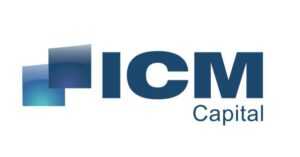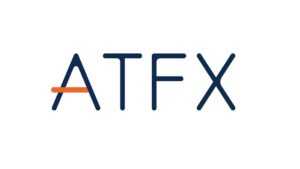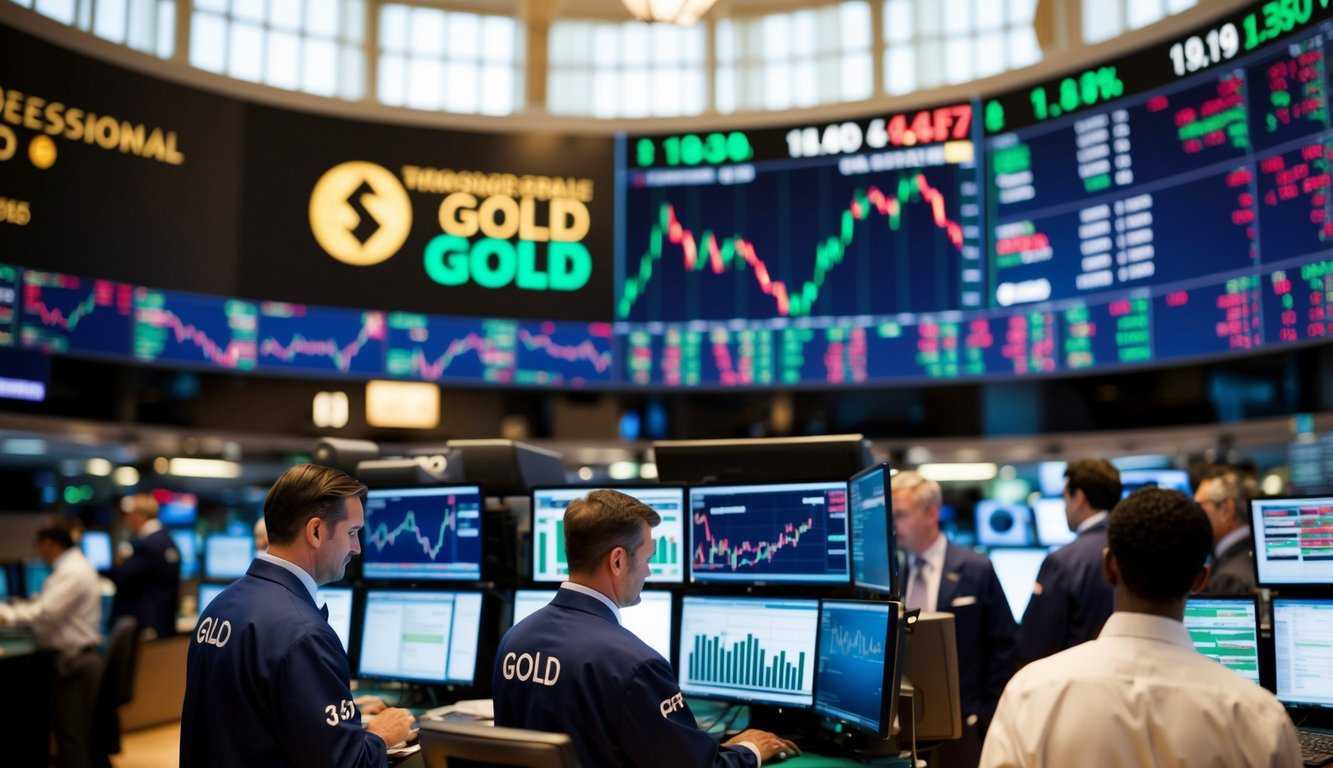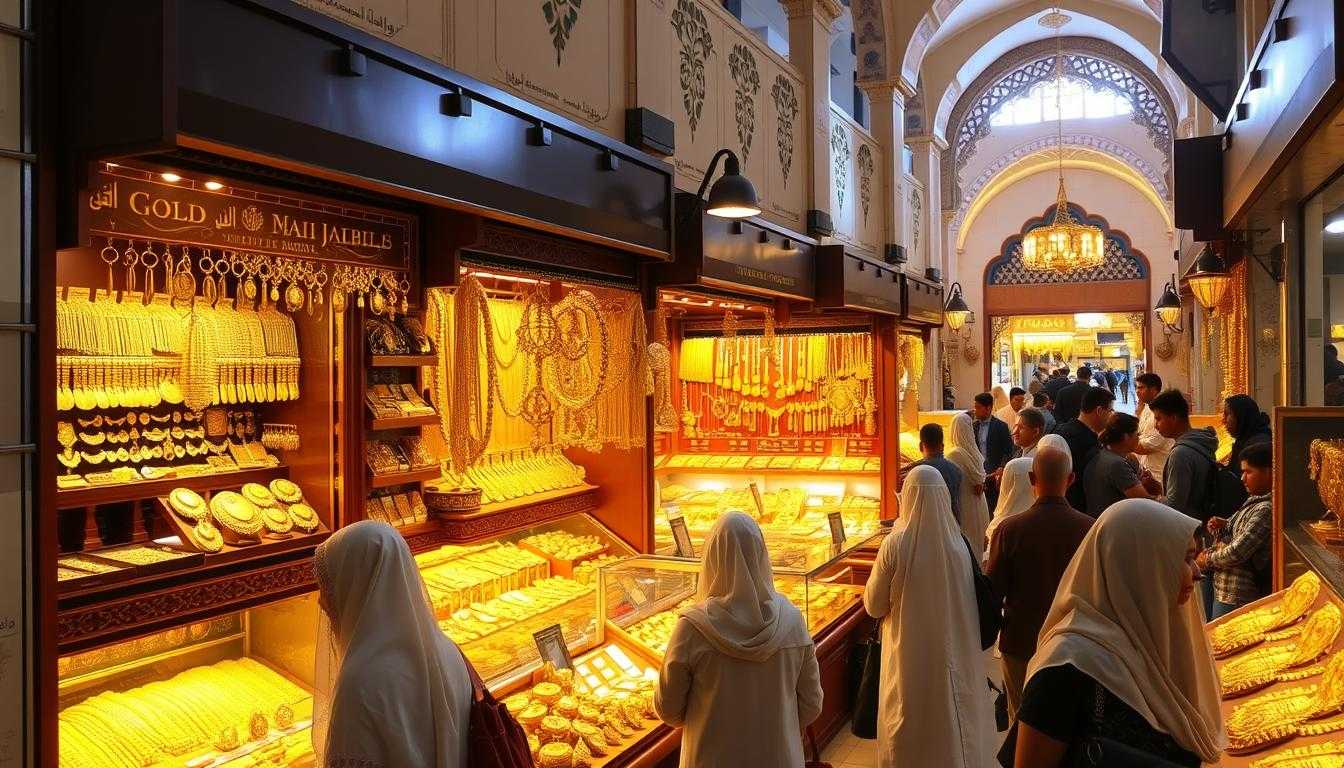Did you know the global cryptocurrency market could hit $5.2 trillion by 2025? Bitcoin and other diare rapidly transforming the financial landscape, drawing in a diverse array of investors seeking to maximize their returns. Simultaneously, gold remains a steadfast pillar in the investment world, prized for its stability and historical value. As these two asset classes continue to evolve and interact, mastering gold and Bitcoin analysis strategies and techniques becomes crucial for anyone looking to navigate this intertwined market effectively. This journey involves not only understanding the fundamentals of gold analysis but also identifying the best broker to execute your trades efficiently. In this article, we will delve into the methodologies and insights needed to equip you with a robust analytical toolkit for success in both gold and Bitcoin investments.
gital assets are gaining fans fast. This guide will teach you how to analyze the gold and Bitcoin markets. You’ll learn to make smart choices and grow your wealth over time.
Key Takeaways
- Cryptocurrencies, led by Bitcoin, have quickly become popular investments.
- It’s key to understand the gold and Bitcoin markets for smart investing.
- This article will share expert tips for analyzing these markets.
- Investors will learn to use market analysis for long-term wealth in crypto.
- The article will cover tools, cycles, and risk management for gold and Bitcoin.
Introduction to Cryptocurrency Trading
Cryptocurrency trading is a new and exciting field for investors. It uses blockchain technology and digital assets. Unlike traditional markets, it’s a decentralized network for peer-to-peer transactions. This setup means cryptocurrencies can be very volatile, offering both chances and risks for traders.
Understanding Cryptocurrency Trading
Cryptocurrency trading is about buying and selling digital currencies like Bitcoin and Ethereum. Prices can change a lot due to many factors. These include supply and demand, market size, media, and laws. This makes trading fast-paced and dynamic.
Potential Returns and Risks
The market’s high volatility can lead to big profits for traders. But, it also brings big risks. Prices can change quickly and a lot. Using borrowed money to trade can make gains and losses bigger.
It’s important to manage risks well. This includes setting limits on losses and spreading investments. These steps help traders handle the cryptocurrency world.
| Cryptocurrency | Price (USD) | Market Cap (USD) | 24h Volume (USD) |
|---|---|---|---|
| Bitcoin (BTC) | 57,000 | 1.1 trillion | 35 billion |
| Ethereum (ETH) | 1,800 | 210 billion | 20 billion |
| Litecoin (LTC) | 220 | 14 billion | 3 billion |
To succeed in cryptocurrency trading, you need to understand the market well. You also need good investment and risk management strategies. By knowing the risks and rewards, investors can make smart choices. This way, they can take advantage of the fast-changing world of digital assets.

“Cryptocurrency trading is not for the faint of heart, but for those willing to embrace the volatility and navigate the risks, the potential rewards can be substantial.”
⇒ Open your account now with ICM Capital and trade Live on gold with a global broker who holds international licenses and is licensed by the Abu Dhabi Global Market ⇐
Choosing a Reputable Crypto Exchange
Choosing a good crypto exchange is key when you start trading cryptocurrencies. You need to look at security, fees, and the types of cryptocurrencies available. Also, the exchange’s reputation and if it follows the rules are important for a safe place to trade.
About 90% of crypto trading happens on centralized exchanges. These platforms have improved their security, like keeping assets offline and getting insurance against hacks. With over 600 crypto exchanges worldwide, you have many places to trade Bitcoin and Ethereum.
Forbes Digital When it comes to choosing a reputable crypto exchange, there are several factors you must consider to ensure the safety of your investments. Security, for instance, is paramount. Many exchanges now make a concerted effort to keep their assets offline, significantly reducing the risk of hacks. Additionally, in an industry prone to cyber threats, seeking exchanges that provide insurance against such incidents can add another layer of protection. Given the increasing popularity of cryptocurrencies, including Bitcoin and Ethereum, it is essential to select a platform known for its reliability and adherence to regulatory standards.
The vast number of crypto exchanges available—over 600 globally—means you have a variety of choices, but not all are created equal. It is crucial to research the reputation of an exchange, check user reviews, and perhaps even consult resources like Forbes Digital Assets. Factors such as the user interface, trading fees, and the range of cryptocurrencies offered can greatly impact your trading experience. A reputable exchange makes these details clear and easily accessible, ensuring you can make informed decisions.
As you navigate your options, it may be wise to draw parallels with traditional investments. For instance, just as you would track the gold rate today or keep an eye on the gold price and its trends, you should also stay informed about the market conditions surrounding cryptocurrencies. Understanding the current trends can help you time your entries and exits more effectively. The same principles that apply to investing in precious metals can often provide insights into the volatile world of digital currencies.
Ultimately, a careful selection process can pave the way to a safe and fruitful trading experience. By prioritizing security, examining the exchange’s reputation, and drawing insights from related investment markets, you can navigate the landscape of cryptocurrency with greater confidence. As the crypto market continues to evolve, informed choices will be key to maximizing potential returns while minimizing risks.
Assets ranked the top 60 crypto exchanges. They looked at things like rules, costs, quality, and safety. Decentralized exchanges offer direct trading but might have slower transactions and higher prices because of low liquidity.
It’s important to read user reviews and ratings to understand an exchange’s performance. By looking at these factors, you can choose wisely and start trading with confidence.
| Metric | Value |
|---|---|
| DeFi Tracker | 2.81% Buy |
| Web3 Tracker | 1.25% Buy |
| BTC 50 :: ETH 50 | -1.47% Buy |
| Crypto Blue Chip – 5 | -1.60% Buy |
| Smart Contract Tracker | -1.88% Buy |
In the top crypto coins, Bitcoin is at ₹5,095,201 (0.15% Buy), Tether at ₹84 (0.1% Buy), BNB at ₹45,598 (-0.4% Buy), Solana at ₹11,821 (-2.26% Buy), and Ethereum at ₹199,286 (-2.96% Buy).

Setting Up Your Trading Account
To start trading cryptocurrencies, you need a trading account with a trusted exchange. You’ll share your personal information and financial details. The verification process can take a few minutes to a few days, depending on the exchange.
Verification Process
The verification process is key to keeping your account safe. You might need to show your ID, proof of address, and even a selfie. This is called Know Your Customer (KYC) and helps the exchange know who you are and follow rules.
Funding Your Account
After verifying your account, you can fund your trading account. You can use bank transfers, debit cards, or other payment methods the exchange supports. By linking your bank or debit card, you can deposit money and begin trading cryptocurrencies.
| Payment Method | Advantages | Disadvantages |
|---|---|---|
| Bank Transfer | Lower fees, secure, reliable | Slower processing time |
| Debit Card | Instant funding, convenient | Higher fees, potential withdrawal limitations |
| Other Payment Methods | Diverse options, flexibility | May have varying fees and processing times |
Setting up your trading account and funding it are crucial first steps. By going through the verification process and choosing your payment methods, you’re set to dive into the cryptocurrency market and make trades.
Selecting Cryptocurrencies to Trade
Choosing the right digital assets to trade in the cryptocurrency market is key. We need to know the big players like Bitcoin and Ethereum. Also, we should look into altcoins for their potential.
Major Cryptocurrencies: Bitcoin and Ethereum
Bitcoin is the leader and biggest player in the market. Its price and trends affect the whole market. Ethereum is known for its smart contracts, making it useful and valuable.
Altcoins and Their Potential
Altcoins offer a chance for bigger gains but come with more risk. They can be more volatile but also have big upside potential. It’s important to check their development and long-term plans.
Spreading out your investments in cryptocurrencies is wise. It helps reduce risk and can lead to better returns. Knowing about Bitcoin, Ethereum, and altcoins helps us make smart choices.
“Cryptocurrencies are traded on decentralised markets, run across a network of computers called a blockchain.”
To succeed in the cryptocurrency market, diversification is key. We should also use technical analysis and keep up with market news. A balanced strategy can help us thrive in digital asset trading.
Developing a Trading Strategy
Creating a solid trading strategy is key in the fast-changing world of cryptocurrency markets. Traders can pick from day trading or swing trading, based on their goals and how much risk they can handle. Each method has its own benefits and challenges that can affect how well a trader does.
Day Trading: Capitalizing on Short-Term Fluctuations
Day trading means making lots of trades in one day to make money from quick price changes. It needs constant watching of the market, fast decisions, and a big risk-taking spirit. Traders often use things like CFDs to make more money, but this also means they could lose a lot.
Swing Trading: Riding Larger Price Swings
Swing trading, on the other hand, involves holding onto positions for longer periods to make money from bigger price swings. It’s better for those with less time to trade or who are not as comfortable with risk. Swing traders use tools like moving averages to find the best times to buy or sell.
| Characteristic | Day Trading | Swing Trading |
|---|---|---|
| Time Frame | Intraday | Days or weeks |
| Trading Frequency | Multiple trades per day | Fewer trades, typically 2-3 per week |
| Risk Tolerance | High | Moderate |
| Profit Potential | Higher | Moderate |
| Time Commitment | Intensive | Less intensive |
Choosing between day trading and swing trading depends on what you want to achieve, how much risk you can take, and how much time you have. Knowing what each strategy is about helps traders pick the right one for them and their financial goals.
Mastering Gold and Bitcoin Analysis Strategies and Techniques
Understanding Market Cycles and Timing
Investing in cryptocurrencies like Bitcoin is all about knowing market cycles. Bitcoin, in particular, goes through a four-year cycle, mainly due to the bitcoin halving event. This event cuts the supply of new bitcoins, affecting prices. Investors look to buy low and sell high, using the market’s ups and downs to grow their wealth over time.
Fundamental Analysis for Gold and Bitcoin
Simpson believes in investing in gold and bitcoin for long-term wealth. He sees bitcoin as a digital asset, like gold, protecting against inflation. With big companies like MicroStrategy adding bitcoin to their balance sheets, its value as a long-term investment is clear. Knowing why gold and bitcoin are valuable is key to smart investing.
| Metric | Gold | Bitcoin |
|---|---|---|
| Supply Characteristics | Limited, mined from the earth | Finite, capped at 21 million coins |
| Use Cases | Jewelry, electronics, and investment | Digital currency, store of value, and investment |
| Historical Performance | Steady long-term appreciation | Volatile with significant price fluctuations |
| Inflation Hedge | Effective hedge against inflation | Effective hedge against inflation |
“Recognizing and anticipating these cyclical fluctuations can lead to better timing of investment moves, crucially influencing overall profitability.”
Technical Analysis Strategies
In the world of cryptocurrency trading, technical analysis is key. It helps us make smart investment choices. By looking at past price data, chart patterns, and technical indicators, we spot trends and find trading chances. Knowing how to read charts and use indicators like moving averages and oscillators helps us move through the markets better.
Chart Patterns and Indicators
Technical analysis uses charts with technical indicators. Candlestick patterns show market feelings and price changes. Green means prices are going up, and red means they’re going down.
Traders use many indicators, like moving averages and Bollinger bands. These help find support and resistance levels, momentum, and volatility. Testing these strategies on past data is common. Using algorithms for technical analysis is also becoming more popular.
Sentiment Analysis and Social Media Trends
Looking at sentiment and social media trends gives us market insights. Analyzing investor feelings online helps predict price changes. Knowing how hype, fear, and greed affect the market is key to smart trading.
“Technical analysis is a powerful tool for navigating the cryptocurrency markets, but it should be balanced with a solid understanding of fundamental analysis and market psychology.”
While technical analysis is useful, it has its limits. Mixing it with fundamental analysis gives a fuller view of the markets. This helps traders make more informed decisions.
Risk Management and Portfolio Diversification
In the volatile and dynamic cryptocurrency market, effective risk management and portfolio diversification are key. We must focus on keeping our capital safe and avoid the dangers of too much leverage. This can quickly eat away at our earnings.
Using strong stop-loss mechanisms is a crucial strategy. By setting the right stop-loss levels, we can control our losses and protect our portfolios. This disciplined method helps us stay in the game for the long haul and boosts our chances of making consistent profits.
Spreading our cryptocurrency investments across different assets is another smart move. Instead of putting all our eggs in one basket, we can diversify. This means investing in a mix of major coins like Bitcoin and Ethereum, and promising altcoins. This strategy reduces the risk of the crypto market and lets us tap into different growth areas, like DeFi, NFTs, and layer-1 blockchain platforms.
| Asset Class | Allocation % | Rationale |
|---|---|---|
| Bitcoin (BTC) | 50% | Proven track record, high market capitalization, and liquidity |
| Ethereum (ETH) | 30% | Dominant smart contract platform, strong DeFi ecosystem |
| Altcoins | 20% | Selective exposure to promising projects with growth potential |
By taking a balanced and diversified approach to cryptocurrency investing, we can handle market volatility. This way, we keep our capital safe and boost our chances of success in the long run. Remember, risk management and portfolio diversification are the cornerstones of sustainable cryptocurrency trading.
“Diversification is the only free lunch in finance.” – Harry Markowitz, Nobel Laureate in Economics
Combining Gold and Bitcoin Investments
In today’s fast-changing world, mixing gold and bitcoin investments is a smart move. We believe in a balanced portfolio with strong assets like bitcoin and gold. These two can be the foundation of long-term financial success, each bringing its own benefits.
Building a Balanced Portfolio
Diversifying with gold and bitcoin helps our portfolio stay strong through market ups and downs. Bitcoin acts as a digital shield against inflation, thanks to its limited supply and decentralized nature. On the other hand, gold is a traditional safe haven against economic risks.
| Asset | Performance | Key Attributes |
|---|---|---|
| Gold |
|
|
| Bitcoin |
|
|
By balancing our investments in gold and bitcoin, we aim for long-term growth, wealth generation, and inflation hedging. This approach uses each asset’s unique strengths, building a solid financial base.
“The clash between Bitcoin and gold signifies a profound shift in the financial world, highlighting the transformative force of Bitcoin in challenging traditional investment notions.”
Staying Updated on Regulatory Changes
The world of cryptocurrency is always changing. It’s key for traders to keep up with new rules and laws. By watching for updates on regulatory changes, we can make smarter choices and feel surer about our moves.
Recently, the crypto world has seen big changes. In 2023, over US$24.2 billion was lost to scams. The U.S. Department of Justice (DOJ) is now focusing more on cryptocurrency-focused cases. They also made a big deal with Binance, getting them to pay US$4 billion for breaking rules.
There’s been a push to stop money laundering in crypto. The DOJ caught people using Samourai Wallet for over US$100 million in scams. They also went after Tornado Cash’s creators for over US$1 billion in money laundering transactions.
These government policies and compliance steps are all about keeping investors safe and the market stable. By keeping up with these changes, we can make better choices. This helps us stay ahead in the fast-changing world of cryptocurrency.
The crypto market is complex and always changing. Keeping an eye on new laws and rules helps us stay ahead. This way, we can make smart trades and feel confident in our choices.
⇒ Open your account now with ICM Capital and trade Live on gold with a global broker who holds international licenses and is licensed by the Abu Dhabi Global Market ⇐
Leveraging Digital Asset Resources
Aspiring cryptocurrency traders can greatly benefit from digital asset resources. These platforms offer deep market analysis, effective investment strategies, and insights from experts. By using these resources, we can grow our knowledge, stay current with market trends, and learn from others.
Educational Platforms and Communities
The digital asset world has many educational resources for us. There are online courses, webinars, and forums to help us understand the cryptocurrency market. These places offer chances to learn together, share ideas, and improve our investment strategies.
By joining these digital communities, we get access to lots of market analysis and current data. This helps us make smarter choices and adjust our trading plans as the market changes. Using these resources can really help us feel more confident and prepared in the fast-changing world of cryptocurrency.
“The key to successful cryptocurrency trading lies in continuously expanding our knowledge and staying connected with the broader trading communities. These digital resources are invaluable in shaping our investment strategies and navigating the ever-changing market.”
Conclusion
Investing in cryptocurrencies like Bitcoin and gold can lead to long-term wealth. But it needs a solid strategy and a good grasp of the market. Successful traders focus on keeping their capital safe, follow disciplined habits, and use both fundamental and technical analysis.
By using the strategies and insights from this guide, investors in the UAE can succeed in cryptocurrency trading. They should aim for long-term wealth and be ready to adapt to market changes. This way, we can fully benefit from these new assets and secure our financial futures.
The crypto world is always changing, so it’s key to keep up with new rules, tech, and trends. Using educational resources and joining digital asset communities helps us learn more. This way, we can improve our trading plans and make choices that fit our goals and risk levels.
FAQ
What is cryptocurrency trading and how does it work?
Cryptocurrency trading is about buying and selling digital currencies to make money. Unlike stocks, these digital assets use blockchain technology for secure and transparent trades.
What are the potential returns and risks of cryptocurrency trading?
Trading cryptocurrencies can be very profitable, but it comes with risks. The market changes fast, so traders need to stay alert and make smart decisions. It’s key to know the risks and have a solid strategy to protect your money.
What factors should I consider when choosing a crypto exchange?
Choosing a good crypto exchange is critical. Look at the exchange’s security, fees, and the types of cryptocurrencies it offers. Also, check if the exchange is reputable and follows the rules.
How do I set up a trading account on a cryptocurrency exchange?
To start, you need to create an account on a crypto exchange. You’ll give personal and financial details. The verification process can take a few minutes to days. Then, you fund your account with money from your bank.
Which cryptocurrencies should I consider trading?
Bitcoin and Ethereum are popular among traders. Bitcoin is a big player in the market. Ethereum is known for its smart contracts. Altcoins offer higher risks but can be more rewarding if chosen wisely.
What are the different trading strategies I can use in the cryptocurrency market?
You can use day trading, swing trading, or long-term holding. Day trading is for quick profits. Swing trading is for bigger swings. Long-term holding is for holding onto assets for a while.
How can I use fundamental and technical analysis to trade cryptocurrencies effectively?
Fundamental analysis helps you understand market cycles and timing. Technical analysis uses charts and indicators to spot trends. Adding sentiment analysis can also help your trading.
Why is risk management and portfolio diversification important in cryptocurrency trading?
Managing risks and diversifying your portfolio are key. Avoid using too much leverage. Use stop-loss strategies and spread your investments to reduce risks.
How can combining gold and bitcoin investments benefit my portfolio?
Investing in bitcoin and gold can be smart. Bitcoin fights inflation, while gold is a traditional value. Together, they can make your portfolio strong and grow your wealth.
How do regulatory changes impact the cryptocurrency market, and how can I stay informed?
The crypto market changes with regulations. Keeping up with policy updates is important. This helps you make better decisions and stay confident in your trading.
What resources can I use to enhance my cryptocurrency trading knowledge and skills?
There are many resources for crypto traders. Educational platforms and online communities offer valuable insights. They help you learn, stay updated, and grow as a trader.








